Cross Road Blues
Back around 2013, Vaughn, New Mexico was probably best known for its police 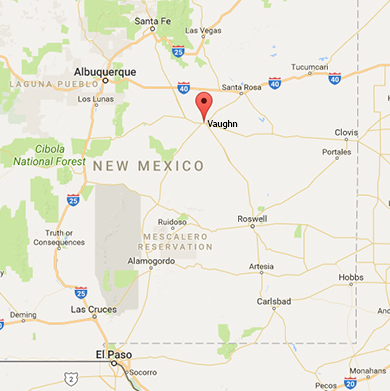 force, which consisted of a single drug-sniffing dog named Nikka. The year prior there’d been a police chief, but he owed tens of thousands of dollars in child support and was accused of selling one of the town’s rifles and keeping the proceeds. A second officer later pleaded guilty to assault and battery, but he was never officially certified anyway. That left Nikka and the Guadalupe County Sheriff’s Department to keep the peace in Vaughn, which, despite sometimes being considered a stopover for drug smugglers, probably wasn’t all that difficult. But while Vaughn has a police force again, as well as a population of over 400, it was once much more bustling than it is today.
force, which consisted of a single drug-sniffing dog named Nikka. The year prior there’d been a police chief, but he owed tens of thousands of dollars in child support and was accused of selling one of the town’s rifles and keeping the proceeds. A second officer later pleaded guilty to assault and battery, but he was never officially certified anyway. That left Nikka and the Guadalupe County Sheriff’s Department to keep the peace in Vaughn, which, despite sometimes being considered a stopover for drug smugglers, probably wasn’t all that difficult. But while Vaughn has a police force again, as well as a population of over 400, it was once much more bustling than it is today.
In fact, Vaughn used to rattle and clack quite a bit. 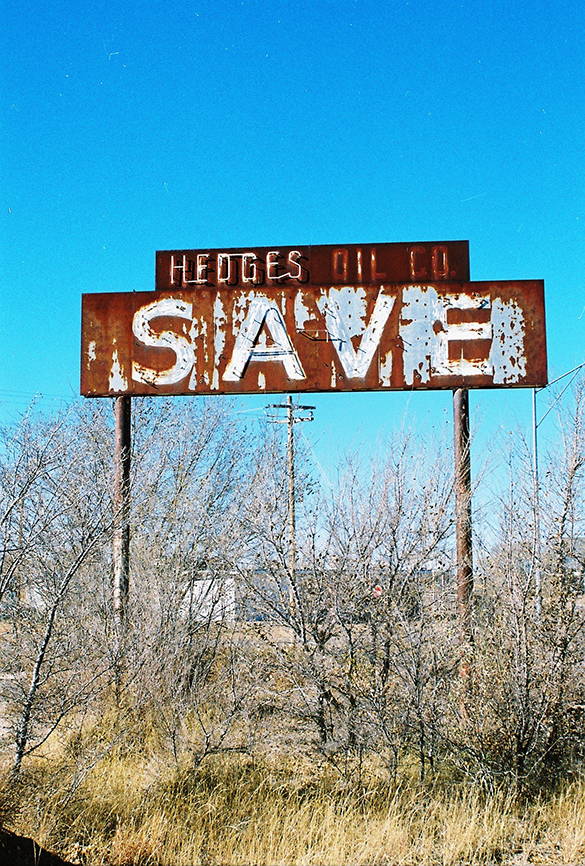 That’s because by 1905 it was where the Atchison, Topeka & Santa Fe (ATSF) and El Paso & Southern Railroads intersected, the only place in New Mexico where two major railways crossed. It was also a division point for the railroad, with a roundhouse, multiple tracks, and a railroad office. After the arrival of the automobile, it became the town where three US Highways–54, 60, and 285–met.
That’s because by 1905 it was where the Atchison, Topeka & Santa Fe (ATSF) and El Paso & Southern Railroads intersected, the only place in New Mexico where two major railways crossed. It was also a division point for the railroad, with a roundhouse, multiple tracks, and a railroad office. After the arrival of the automobile, it became the town where three US Highways–54, 60, and 285–met.
But before Vaughn even had a name it was a favored resting place during drives on the Stinson Cattle Trail. Jim Stinson worked for the New Mexico Land and Livestock Company and, beginning in 1882, would bring up to 20,000 head of cattle at a time from Texas to homesteads and forts in the Estancia Valley of east-central New Mexico.
Vaughn got its name from Major G.W. Vaughn, who was a civil engineer for the ATSF. Right off the bat there was a water shortage and, in 1908, the ATSF built a water tank and two underground cisterns to try to collect as much of the precious liquid as they could. Drinking water was brought in by tanker from nearby Willard and Negra. The El Paso & Southern did a little better, having their water transported via wooden pipe from Bonito Lake, 100 miles to the southwest. In 1909, the ATSF figured it would just be easier to pay the El Paso & Southern 24 cents per thousand gallons than try to collect their own water any longer.
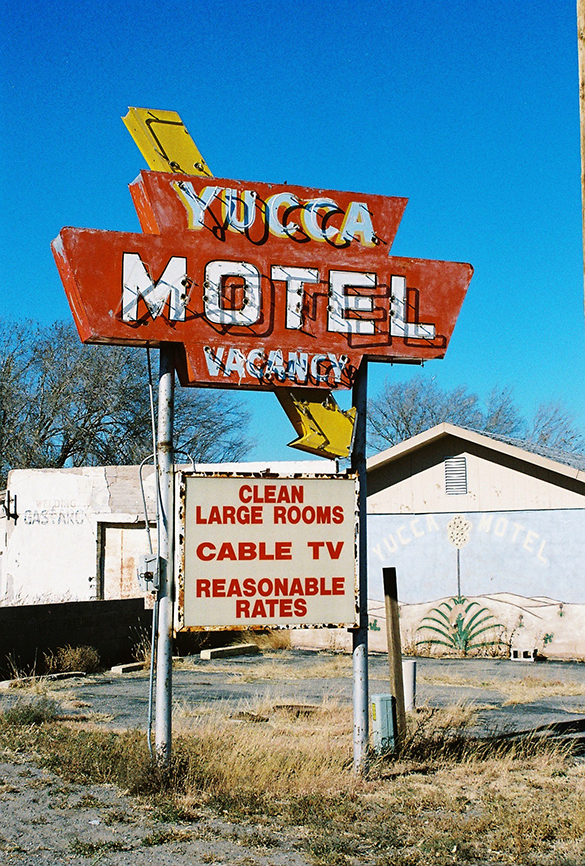 In 1910, the Los Chavez Harvey House opened, named after the Chavez family, who arrived in the area with Don Juan de Onate and the first European settlers in the late 1500’s. The Harvey House in Vaughn served as kind of a minor league team for newly recruited Harvey Girls who were just learning the proper way to look nice and be good. The hotel itself never saw many guests and closed in 1936.
In 1910, the Los Chavez Harvey House opened, named after the Chavez family, who arrived in the area with Don Juan de Onate and the first European settlers in the late 1500’s. The Harvey House in Vaughn served as kind of a minor league team for newly recruited Harvey Girls who were just learning the proper way to look nice and be good. The hotel itself never saw many guests and closed in 1936.
Charles Lindbergh even stopped in Vaughn, but not because he particularly wanted to. In 1928, engine failure forced him to land his plane and wait in town a few days for a replacement part to arrive. He stayed at the Harvey House and, apparently, despite the best efforts of the girls, was not interested in socializing with them in the slightest.
Vaughn wasn’t incorporated until 1919, but by 1920 it had a relatively healthy population of about 1000. However, the number of residents may never have climbed much higher than that.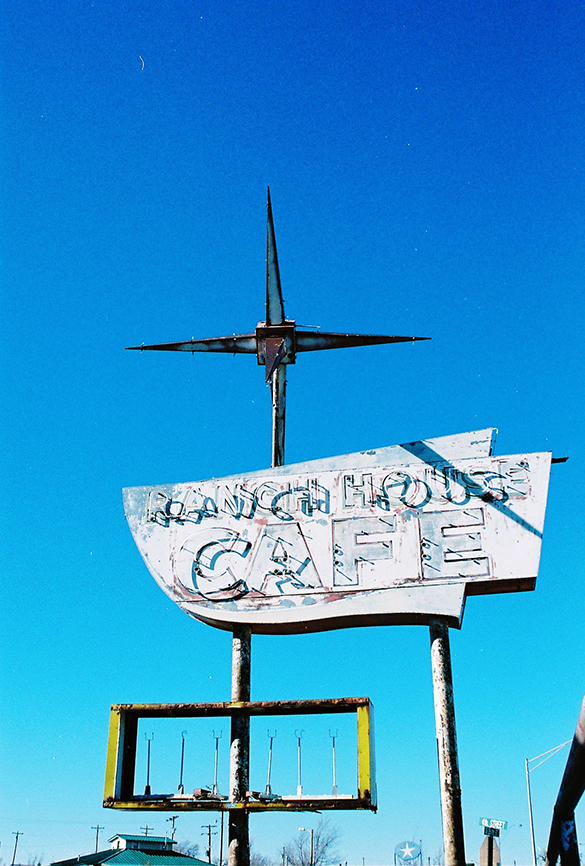 One Harvey Girl, Alice Garnas, said in 1926, “Vaughn was a shocking place. There was no place to go, nothing to do. Just Vaughn and those wide plains on all sides–cattle country. But it was for me.”
One Harvey Girl, Alice Garnas, said in 1926, “Vaughn was a shocking place. There was no place to go, nothing to do. Just Vaughn and those wide plains on all sides–cattle country. But it was for me.”
And it might be for you, too. But if, like many, you’re just passing through, try to make a stop at Penny’s Diner. Look for the restaurant at the crossroads that appears to be inside a large aluminum Airstream trailer. Once you enter, it’ll be 1955 all over again and you’ll swear you can hear that clickity-clack as the iron horses rumble through.
Also worth noting is that in an abandoned bar at the north end of Cedar Ave. are eight murals, of which six are shown here. Well, not only is the bar abandoned; it’s about to fall down. But the murals were reportedly done around the time of the Great Depression by someone who went only by “Vagabond Artist,” which is how he even signed some pieces. It’s said he painted the murals in exchange for room, board, and something to drink, but, nothing more is known.
Most of the hard-to-find information and quotes included here came from Dixie Boyle’s excellent book, “A History of Highway 60 and the Railroad Towns on the Belen, New Mexico Cutoff.” Ms. Garnas’ quote came from “The Harvey Girls: Women Who Opened the West,” by Lesley Poling-Kempes. I also grabbed a bit from Wikipedia and the LA Times, too, believe it or not.
John Mulhouse moved to Albuquerque in 2009 after spending the previous decade in Minnesota, Georgia, Tennessee, and California. He loves the desert, realizes it doesn’t care too much about him, and thinks that’s all as it should be. More of his documentation of the lost, abandoned, beaten, and beautiful can be found at the City of Dust blog and the City of Dust Facebook page.

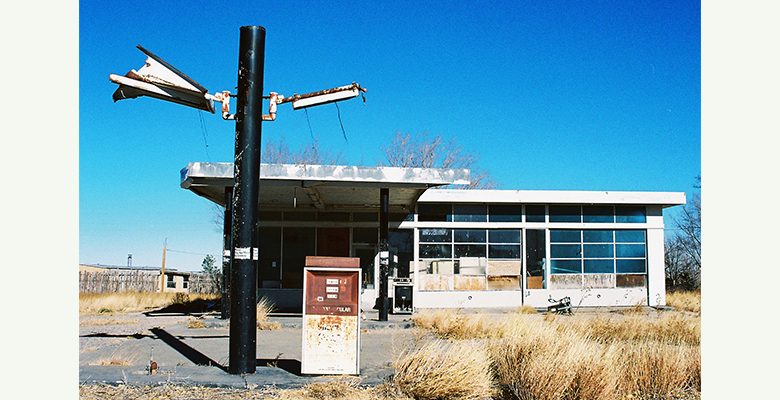
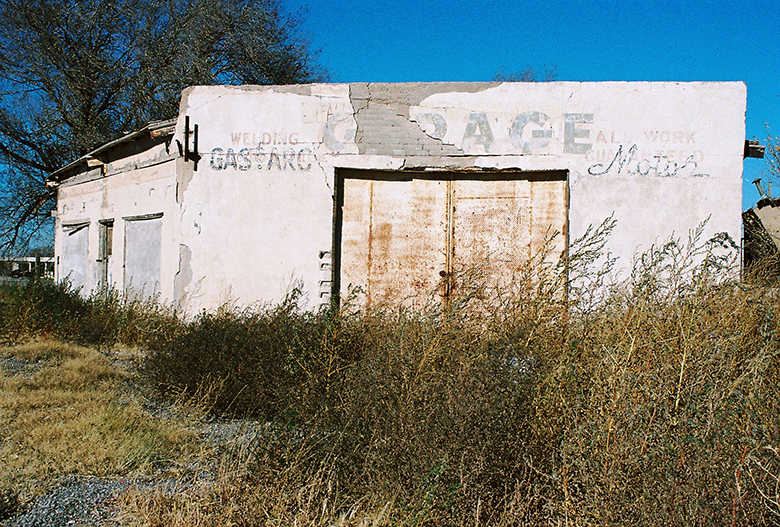
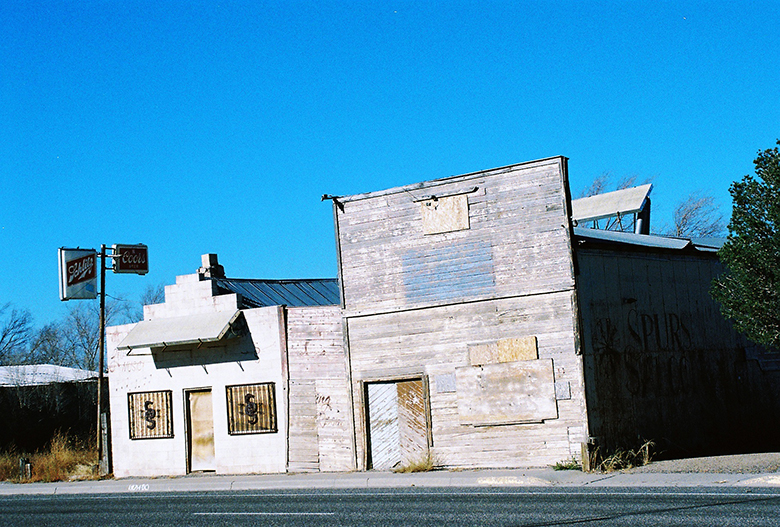
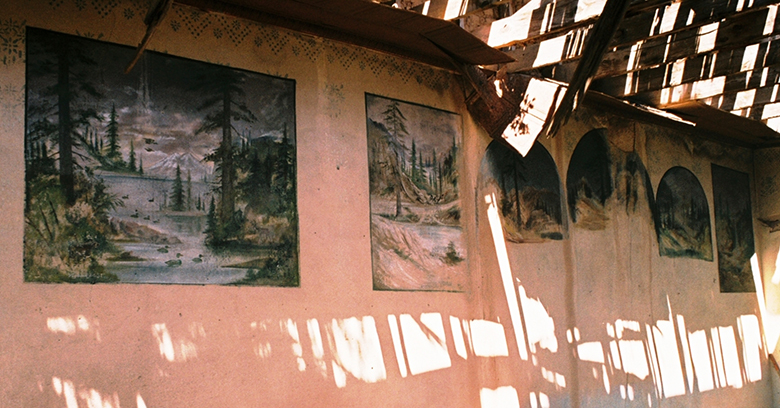
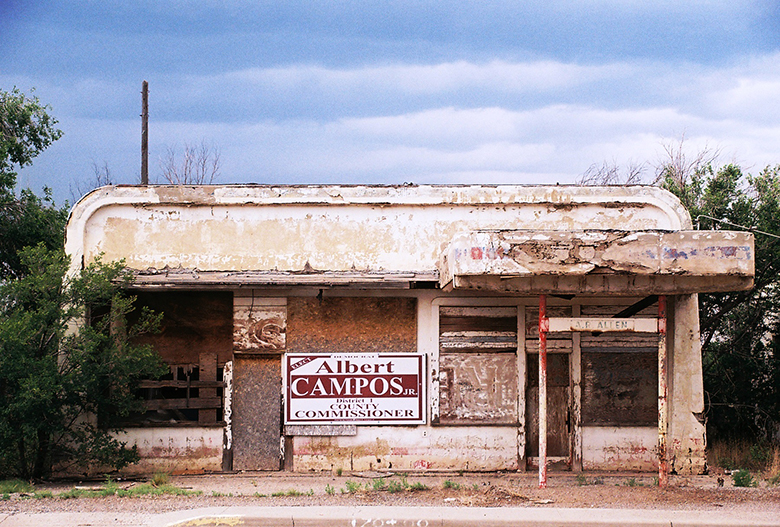
Need any help to find what happened with my lost aunt and cousins lived in vaughn since abt 1899. Aunt Died there 1908 cousin 1960. Been looking for years finally found clues McMullen family?? There were 6 children. Buried local cemetery. Love to find any connections living today. Thinking to visit there see what i can find.
LarryAndy@aol.com
There are still some McMullen living. One in Texas, New Mexico, Colorado and Missouri.
This is a link to a video I made about Charles Lindbergh and the man, Ralph Elliott, that repaired his plane after his dead stick landing in Vaughn, New Mexico.
theo balero bought the ranch my grandmother owned back in 30s I have a picture when my dad took us back there in probably between 1958 and 1960. I would like to know if the family is still aroung there
My late grandmother & grandfather owned a motel called the Hacienda Motel… not sure when they bought it but I believe I visited it in the late 1950’s/early to mid 1960’s. Anyone have any information on that? Their names were Tom & Jessie Dare and were from Oklahoma City.
The picture of the Ranch House Cafe brought a flood of memories from my 1960s childhood. We lived in Phoenix, but my mom had an aunt & uncle who lived in Vaughn. We’d visit Aunt Susie & Uncle Doug Nichols at least once a year. Aunt Susie was a very feisty woman who waitresses at the Ranch House. Everyone knew and loved her. The owners first name was Bob, but I dont recall his last name. Bob, his wife and 2(?) daughters live in a ranch-style home nearby. They were wonderful people. The police, mostly highway patrol, never paid for a meal, at the Ranch House, as I recall. Bob took me fishing with him once up to Concha’s Lake. Didn’t catch a thing, but he got schnockered on beer, and let me have a couple too.. Bob would host crappie fish frys at the restaurant. They were big family get togethers. Aunt Susie would retail us with stories of being snowed in at the cafe. At least everyone ate well. There was a baker at the Ranch House famous for his giant, home baked cinnamon rolls. Everyone simply called them “Cedro’s rolls”. Great times in the 60’s, great memories.
Growing up in Roswell, we often went to Albuquerque and Santa Fe to shop. We always left early and stopped at the Ranch House for those cinnamon rolls! It was the highlight of the trip for me!!
My Grandmother managed the Ranch View Motel and restaurant for many years.
Genevieve Gonzales. Her husband worked for the Santa Fe railroad. Nice friendly people.
Gosh, it’s great to hear all the stories of times gone by.
Always drive through Vaughn and Encino on my way to San Antonio.
Worked Vaughn in the early 70’s for the AT&SF RY. Have some fond memories of the town.
Charles Smiley was the Station Agent, one of the nicest people you will ever meet.
Carl – trying to find info about a family friend who went missing near Vaughn in 75. His name was Jim Sullivan, he was driving a Volkswagen Beetle. If you have any memory of that time please let me know.
A LOT of people vanished in or near Vaughn, including 2 married couples traveling together in 1935. Their car was found a few weeks later, abandoned in Dallas, Texas. My opinion is that a mass-murderer was operating there in the 1930’s and 1940’s, but the murders were never connected and no one was ever a suspect.
I moved to Tucson in 1978, and a few years after that. road crews on the mountain road to MT Lemmon, just north of Tucson, found an MG roadster that had been missing for several years. It belonged to a U of A student who disappeared long before. His body was still in it when they found it. It had never been noticed in the intervening years, and was not found until a construction crew came across it during the rebuild of the highway up to Mt. Lemmon.
I grew up in Vaughn from early 1950ties to 1960. My dad Dr Ralph Brower practiced medicine including car accidents, delivering babies and all medical needs. He was one who did his best to care for patients including house calls. He finished his career in Belen NM. It was a great and free time on my life!!!
My mother was four years old when she arrived in Vaughn by wagon from Oklahoma. She graduated from Vaughn high school in 1930. The times were quite difficult. The small amount of house water was stored in a cistern from rainwater hitting the roof. No electricity or indoor plumbing. The kitchen stove provided all heat for the Adobe structure. My visits to Vaughn started approximately 1940 with my mother driving us from our home in Las Vegas in a1936 Chevrolet coupe. I remember well the dim kerosene lights, bed pans, Bathwater heated on the kitchen Coal burning stove. I cannot remember leftover food after the evening meal. If there was any food to be stored it was placed in a small wooden box on the north side of the house and a 25 pound block of ice was purchased to be inserted. People were strong, patient, and always helpful.
My mother spent a large part of her childhood in Vaughn… Her dad, Bill Easily, ran the Hedges gas station (see 2nd photo) for many years and the family all lived in a small apartment in the back of the station… My dad’s father was a forman for the Collin’s Ranch, West of Vaughn… When my dad came back from serving in the Air Force, he worked at the Standard gas station on the other side of the town; I believe it was owned by Arlin Allen at the time… My mom waitressed at the Ranch House when she met my dad, and as they say, the rest is history 🙂
My great great Grandfather, Perdo Luis Sanchez, from Anton Chico worked for the Railroad in Vaughn in 1920 per the Census before they came out to Los Angeles during the Depression,
My parents were from Anton Chico originally. I was born and raised in Vaughn.